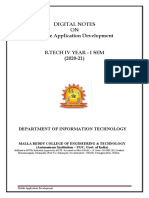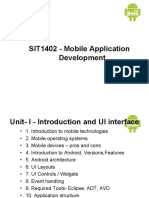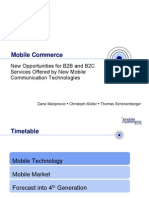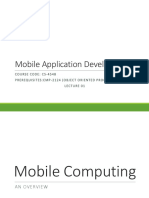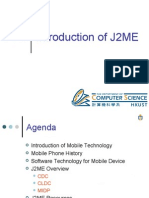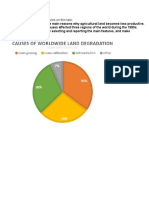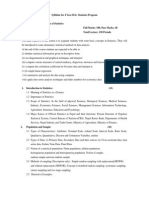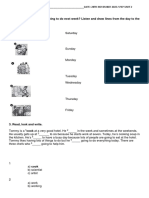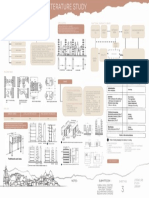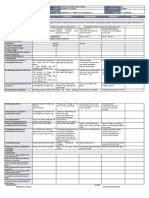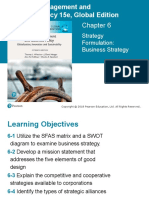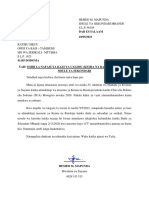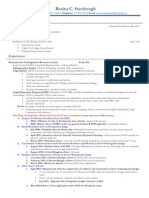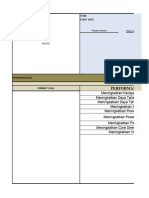elcome to CP3307 / CP5307
Discipline of IT
James Cook University
3/11/15
�This presentation focuses on
1.Subject Outline
2.Why Mobile?
3.The Mobile Ecosystem
�Teaching Staf
Subject Coordinator: Dr Jason Holdsworth
Lecturer: Dr Cue Nguyen
Practical class supervisor: Collin Tran
�Teaching Staf
Contact details:
Room: Level 6
Office Phone: 3001 7838 or 0403
154 157
Email: cue.nguyen@jcu.edu.au
�Purpose of this subject?
Introduction to mobile programming
Current state-of-the-art
The future
�Learning Outcomes
Hands-on experience programming
mobiles devices on the Android platform
and the iOS platform
Understand the importance of mobile UI
patterns
Compare and contrast mobile
technologies
�Subject Assessment CP5307
Coding Exercises: (10%)
Weeks 2-9 (2.5% each)
Coding Assignment: Week 10 (30%)
Android App
iOS App
Final Exam: Examination period (40%)
Short Ans Qs / Long Ans Qs
Technical Report: Week 8 (20%)
Survey the impact of _________ on
the mobile market place
7
�Question time: getting to know you
Who has a mobile device?
Who has programmed Android?
Who has programmed iOS?
Who as programmed Windows Phone?
Who is an App developer?
�So what is Mobility?
Anywhere, anytime...
Technology that makes
our life easier
Dr. Martin Cooper of
Motorola, made the
first US analog mobile
phone call on a
prototype in 1973.
This is a clearly a
reenactment (source
wikipedia)
�Now lets consider
Whats inside a typical mobile phone?
What happens when we make a call or
connect to the internet from a mobile?
�Things packed into a tiny space
�Mobile Phones interact in various
ways
�The characteristics of mobility are:
Physical portability lightweight, rugged
Usability - support many
diferent users
Functionality - custom apps,
built-in apps
Connectivity WIFI, 3G/4G, NFC,
�So how did mobility end up like it is?
�Mobility is shaped by
Makers
Carriers
�The carriers, makers,
and
the
web
The carriers provide networking
infrastructure
Mobile devices rely on the
networks!
The makers create huge numbers of
devices
Apple, Samsung, HTC,
�The carriers, makers,
and
the web
These things push and pull mobile
technology in diferent directions:
Each company has its own interests and
agendas
The telcos control a great deal about
what a mobile devices should be and what
they can do
Example: internet tethering not every
network carrier supported tethering for
every device!
�"The vast majority of the
changes we make to the
[motorola] OS are to meet the
requirements
that
carriers
have"
Motorolas Mobility CEO
Sanjay Jha
Jan 2012
source: http://www.theverge.com/2012/1/10/2697939/motorolas-sanjay-jha-verizon-and-at-tdont-want-seven-stock-android
�Mobility is also shaped by
Consumers
Programmers
�Consumers expectations:
The speed and reliability of the network
A range of useful device capabilities
A range of useful services
�Programmer expectations:
Powerful IDEs that support the programmer
Communities and forums
Comprehensive Documentation
Easy-to-program / easy-to-learn
E.g. allows teenagers to learn how to program
�The future?
Programming to become number one job?
Teenagers making huge amounts of money?
Recently, two 16-year-olds made Finished
http://news.cnet.com/8301-13579_357570441-37/teen-ios-app-developers-hitdownload-lottery/
�So, why mobile?
Is mobile really the next big thing?
Will the buzz and hype last?
�How to be successful, ask these questions:
What is the size and scope of the mobile
market?
What percentage of the market can we
reach?
What competitive benefits does the
mobile medium ofer?
What are the core needs of our reachable
market?
24
Where is the market heading?
�Total market size
25
�Reachable market
26
�Mobile is the 7th mass medium
1.
2.
3.
4.
5.
6.
7.
Printing press (15th Century)
Recordings (19th Century)
Cinema (1900s)
Radio (1910s)
T.V. (1950s)
The Internet (1990s)
Mobile (2000s)
�Mobile is the 7th mass medium
Mobile is:
The first personal mass media
The first always-on mass media
The first always-carried mass media
The only mass media with built-in payments
�So whats the 8th mass medium?
The Mobile Web is
likely to be a big part
of it
�The history of mobile phones is
complex!
http://www.esphoneblog.com/2009/08/26/picture-of-all-the-nokiaphones-ever-released/
�There are a few ways to look
at the history of mobile tech
Mobile Device Eras:
Network
Generations:
1G, 2G, 3G, 4G
Brick, Candy Bar,
Feature Phone,
Smartphone,
Touchphone
�1G
1st generation mobile phones
Just calls... mobile to
mobile/landline
No additional functionality
Analog system
�2G
2nd generation mobile
phones
Digital system
Additional functionality
SMS, WAP, Packet news, etc
�3G
3rd generation mobile phones
Much like 2G - but faster
Gave rise to internet apps &
chat apps
�4G and beyond
4th generation mobile
phones
Flexible
Peer-to-peer services
Cooperative services
�The Brick Era 70s 80s
1970s
expensive
1980sto make calls
1G, Huge batteries
limited network reach
hard to find a good
place to use it
Not many cell towers
�The Candy bar Era 90s
Switched to 2G
Switch from analog to digital comms
Telcos create better networking
towers and infrastructure
More services: SMS
�Feature phone & Smartphone Era
00s
2000s
Allow consumers
to:
Listen to music
Take photos
SMS, MMS
Packet news
3G
Nokia was a huge
at this point in
time!
�The Touchphone Era the game
changer
now
Every once and a while, a revolutionary
product comes along that changes everything
Steve Jobs, Jan 2007
�Point 1: Mobiles are NOT EQUAL
http://en.wikipedia.org/wiki/Bit_rate#Progress_trends
30
25
20
15
10
5
0
1G (NMT)
2G (EDGE)
3G (HSPA)
3G (HSPA+)
Bit rates (Mbps)
�1 Mbps
100 Mbps
Mobile phones are NOT EQUAL
WLAN
Blueto
oth
2
Bluetooth
1
GPRS
10m
100m
1000m
�Point
2:
Customers really want
Services
Technology for its own sake is
not enough...
�Conclusion: the mobile ecosystem
is complex!
Services
Applications
Application
Frameworks
Operating Systems
Platforms
Devices
Networks
Carriers
�What is mobile?
Its the start of ubiquitous
computing
44
Questions?


